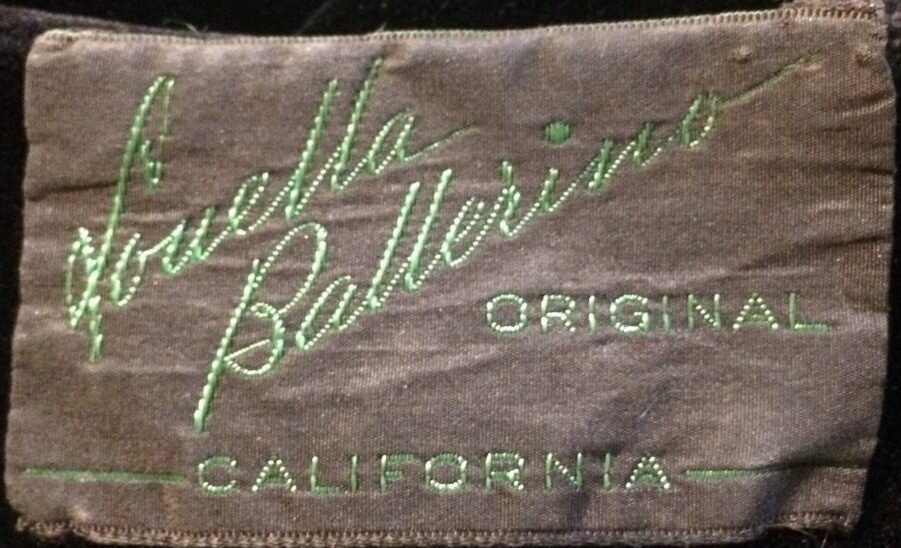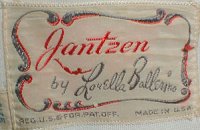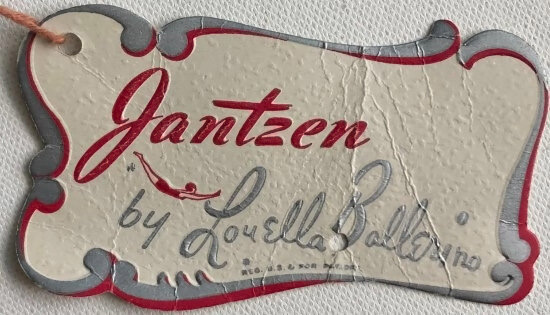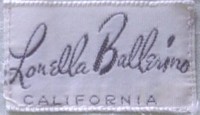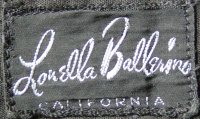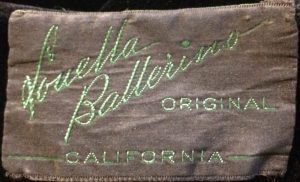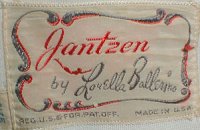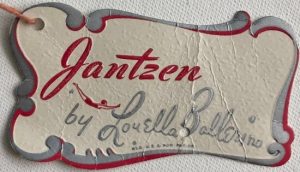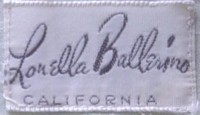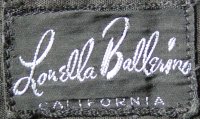Louella Ballerino (1900-1978) began producing designs for custom shops and wholesalers in the late 1930s. She had studied fashion design under MGM-designer Andre Ani as part of an art history degree at the University of Southern California, and tailoring and pattern-making at the Frank Wiggins Trade High School, Los Angeles, where she subsequently taught fashion theory for over five years.
Drawing on library research into Native, Latin American and African heritage, and later, European and Oriental design, Ballerino used unusual motifs and lines as a focal point around which she would build her Californian leisure clothes. Her early successes included African-motif ornamented, dirndl-skirted dresses and Dutch-boy slacks. Her designs often incorporated flexible and unusual features like convertible capes and giant pockets. Like Tina Leser, she strived to use unusual decorative patterns and motifs, such as hand-block printing and folk embroidery, to embellish her clothes.
First receiving wider recognition in the early 1940s, Ballerino went through a number of different business collaborations and partnerships in the effort to manufacture and distribute her designs. For two to three years, starting in 1946, she produced a successful range of themed beach sets in bright printed fabrics for Jantzen. Early sets, using Bates fabrics, were not credited to her, but from 1947, Ballerino’s name was included on the label.
Louella Ballerino’s collections gained exposure alongside other members of the California Fashionists in the late 1940s. But she vanishes from press coverage during the very early 1950s, at the very point that many of her innovations became more widely used by designers in defining popular wardrobes of the following decade.
Written by vintagevoyager
